In modern home design, every element contributes to a property’s overall aesthetic and functionality. Among these elements, the driveway often serves as the first impression of a home. No longer just a practical path for vehicles, the modern driveway has evolved into a significant feature that combines practicality with visual appeal.
This article explores the possibilities in modern driveway designs, offering insights on enhancing your property’s curb appeal while meeting functional needs.
Contents
Basics of Modern Driveways
Modern driveways are more than just functional paths for vehicles; they are an extension of a home’s architectural style and a contemporary design statement. These driveways utilize innovative materials like permeable pavers, stamped concrete, and recycled asphalt to create durable and visually appealing surfaces.
These driveways often feature geometric patterns, sleek lines, and integrated lighting solutions, transforming the traditional driveway into a dynamic element of outdoor aesthetics. By blending form and function, modern driveways enhance the utility and overall beauty of a property.
Homeowners should consider modern driveway designs because they offer numerous benefits beyond mere appearance. A well-designed driveway can significantly boost curb appeal, increasing the property’s market value and making a strong first impression on visitors. Modern materials and construction techniques also mean improved longevity and reduced maintenance costs. Additionally, features like permeable surfaces and sustainable materials contribute to environmental conservation efforts.
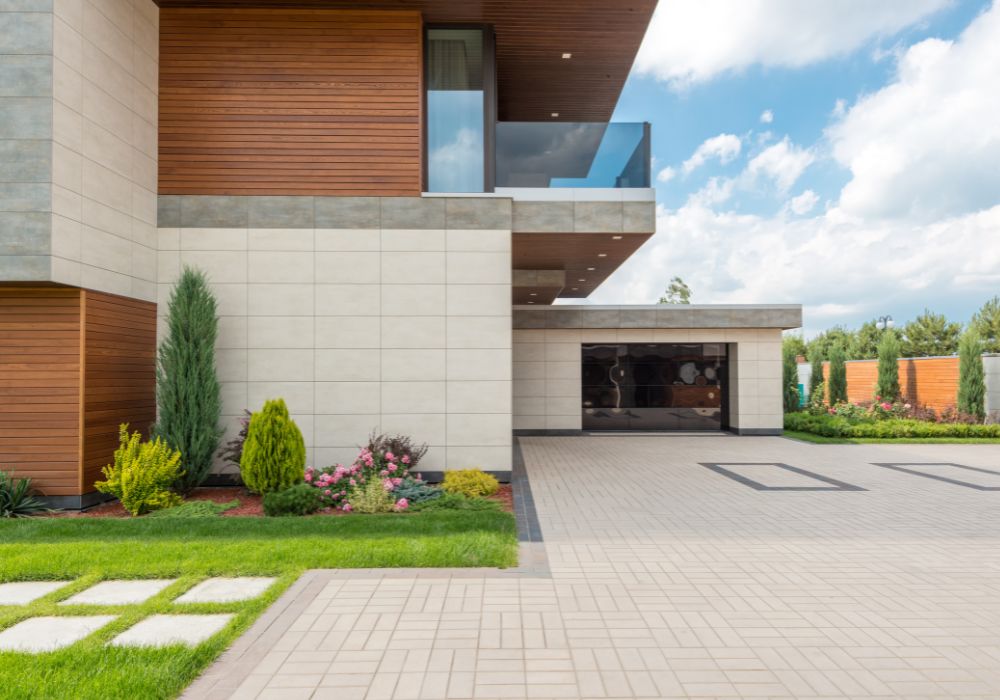
Materials Used in Modern Driveways
Modern driveway designs are a blend of functionality, durability, and aesthetic appeal, largely influenced by the materials chosen. The right material can enhance curb appeal, complement the architectural style of the home, and meet practical needs such as longevity and maintenance.
Below, we explore some of the most popular materials used in modern driveways, each offering unique benefits and design possibilities.
Concrete
Stamped concrete allows homeowners to mimic the appearance of high-end materials like brick, slate, or cobblestone at a fraction of the cost. Contractors can create intricate patterns and textures by using specialized stamps and coloring techniques during the pouring process.
Beyond patterns, concrete can be tinted or stained to achieve a wide range of colors. Integral coloring involves adding pigments directly into the concrete mix, ensuring consistent coloration throughout. Surface staining, on the other hand, is applied after the concrete has cured, offering more dynamic and variegated hues. These options enable customization to match or contrast with the home’s exterior palette.
Pavers
Permeable pavers are designed with spaces between each unit, allowing water to infiltrate the ground below. This eco-friendly feature reduces runoff, mitigates erosion, and aids in groundwater replenishment. Materials like porous concrete or specially designed interlocking pavers make this possible, aligning with sustainable landscaping practices.
Interlocking pavers connect snugly, forming a robust surface capable of handling substantial weight and movement. They are available in various shapes, sizes, and colors, providing ample opportunity for creative designs. Should damage occur, individual pavers can be replaced without disturbing the entire driveway, simplifying maintenance.
Gravel and Crushed Stone
Opting for locally sourced gravel or crushed stone minimizes environmental impact due to reduced transportation emissions. Recycled materials like crushed concrete or reclaimed asphalt are also sustainable choices that repurpose waste products, contributing to environmental conservation.
While gravel is affordable and easy to install, it does require regular upkeep. Over time, gravel can shift or become displaced, leading to uneven surfaces. Periodic raking and the addition of fresh gravel help maintain its appearance and functionality. Installing a solid edging can prevent gravel from spreading into adjacent areas like lawns or flower beds.
Asphalt Innovations
Using recycled asphalt pavement (RAP) is both cost-effective and environmentally friendly. RAP driveways utilize reclaimed asphalt materials, reducing the need for new raw resources and decreasing landfill waste. Despite being recycled, these driveways do not compromise on durability or performance.
Modern advancements allow asphalt surfaces to be enhanced with textures and colors. By adding aggregates or stamping techniques, contractors can create patterns that elevate the driveway’s aesthetic appeal. Colored asphalt is also an option, with pigments added to the mix to produce hues that complement the home’s exterior.
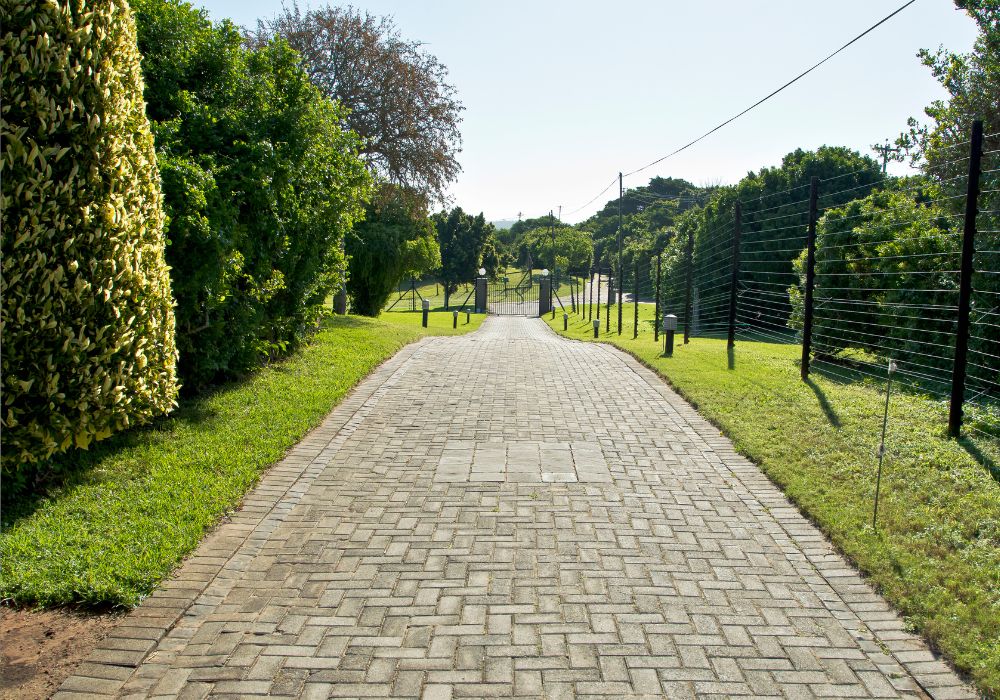
Design Patterns and Layouts
Modern driveway designs are not solely about the materials used but also how these materials are arranged to create functional and aesthetically pleasing layouts. The pattern and layout of a driveway can significantly influence the curb appeal of a property, making it essential to choose designs that complement the home’s architectural style while meeting practical needs.
Below are some of the most popular design patterns and layouts that homeowners can consider for a modern driveway.
Herringbone and Chevron Patterns
The herringbone pattern involves laying rectangular pavers at 45-degree angles to each other, creating a zigzag effect. This pattern is not only visually striking but also offers excellent load-bearing capabilities due to the interlocking nature of the design. The chevron pattern is similar but features pavers cut at angles to form a continuous ‘V’ shape, providing a sleek and seamless look. Both patterns add dynamic movement to the driveway and are ideal for homeowners seeking a contemporary aesthetic.
Basket Weave and Stack Bond
The basket weave pattern alternates pairs of horizontal and vertical pavers, creating a woven appearance that adds texture and interest. The stack bond pattern involves aligning pavers in a grid, offering a clean and minimalist look. These patterns are simple yet effective in enhancing the visual appeal of a driveway without overwhelming the overall design.

Straight Pathways
Straight driveways are traditional and efficient, providing a direct route from the street to the garage or parking area. They work well with modern homes that feature linear architectural elements. Straight pathways can be enhanced with linear lighting or flanked by symmetrical landscaping to emphasize the clean lines and simplicity of the design.
Curved Pathways
Curved driveways add a sense of elegance and softness to the landscape. They are particularly effective on larger properties or sites with natural contours. Curved pathways can navigate around existing trees, gardens, or water features, integrating the driveway seamlessly into the surrounding environment. This layout creates a more leisurely approach to the home, enhancing the sense of arrival.
Incorporating Green Strips and Planting Areas
Integrating green strips or planting areas within the driveway can soften hard surfaces and introduce natural elements. This can be achieved by spacing pavers to allow grass or ground cover plants to grow between them. Not only does this approach enhance aesthetics, but it also promotes drainage and reduces heat absorption, contributing to a more sustainable design.
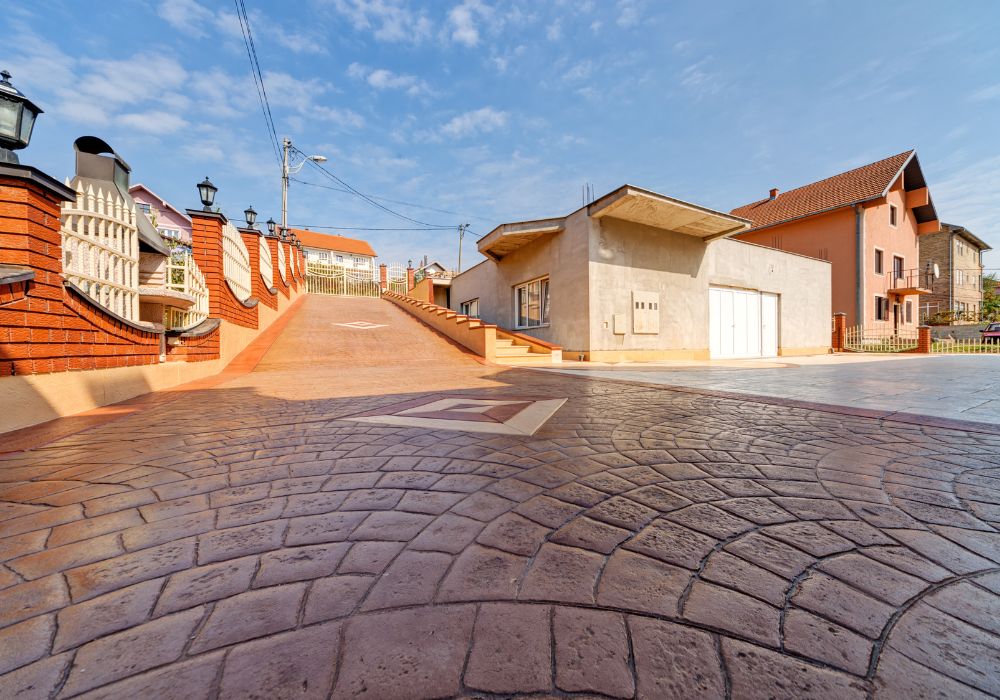
Blending with Hardscape Elements
Driveways can be designed to complement other hardscape features like patios, walkways, and retaining walls. Using the same or complementary materials and patterns creates a unified look. For example, a driveway paved with the same stone as a garden pathway ties different outdoor areas together, enhancing the overall flow of the property.
Lighting Solutions
Modern driveway designs often incorporate lighting solutions that enhance both functionality and aesthetics. Proper illumination ensures safety during nighttime and accentuates the home’s architectural features and landscape.
Below are various lighting options that homeowners can consider to elevate the appeal of their driveways.
LED Lighting for Efficiency
LED lights are a popular choice due to their energy efficiency and long lifespan. They provide bright illumination while consuming minimal electricity, making them cost-effective in the long run. LEDs come in various colors and intensities, allowing homeowners to customize the ambiance of their driveway. They can be installed along the edges or embedded into the driveway surface to create a guiding pathway of light.
Solar-Powered Options
Solar-powered lights harness energy from the sun, eliminating the need for electrical wiring and reducing utility costs. These lights are environmentally friendly and easy to install, making them a convenient option for many homeowners. Solar lights automatically turn on at dusk and off at dawn, providing hassle-free operation. While they may not be as bright as wired lights, advances in technology have improved their performance significantly.

In-Ground and Embedded Lights
In-ground or embedded lights are installed flush with the driveway surface, offering a sleek and unobtrusive appearance. They are designed to withstand the weight of vehicles and harsh weather conditions. These lights are ideal for highlighting the driveway’s edges or creating geometric patterns that enhance visual interest. In-ground lights contribute to safety by clearly delineating the driveway boundaries at night.
Motion-Activated Lighting
Motion-activated lights illuminate when movement is sensed, so improving security. As residents or guests approach the driveway, these lights can discourage possible intruders and offer illumination. Usually able to be tuned for sensitivity and duration, they are also more energy-efficient than lights running constantly. For complete coverage, motion-activated lights can be teamed with other lighting options.
Accent Lighting for Landscaping
Accent lighting emphasizes particular details including architectural elements near the driveway, trees, or shrubs. Spotlights or uplights can produce striking effects by throwing light upward onto these features. After dark, this kind of lighting gives the landscape more depth and dimension, so enhancing the visual appeal of the driveway area. One can deliberately arrange accent lighting to highlight the property’s most appealing features.
Smart Lighting Systems
Smart lighting systems offer advanced control over driveway illumination. These systems can be programmed to adjust brightness, color, and timing remotely via smartphones or integrated home automation platforms. Smart lights can respond to voice commands or be set to operate on schedules, enhancing convenience and customization. They also allow for energy management by ensuring lights are only on when needed.
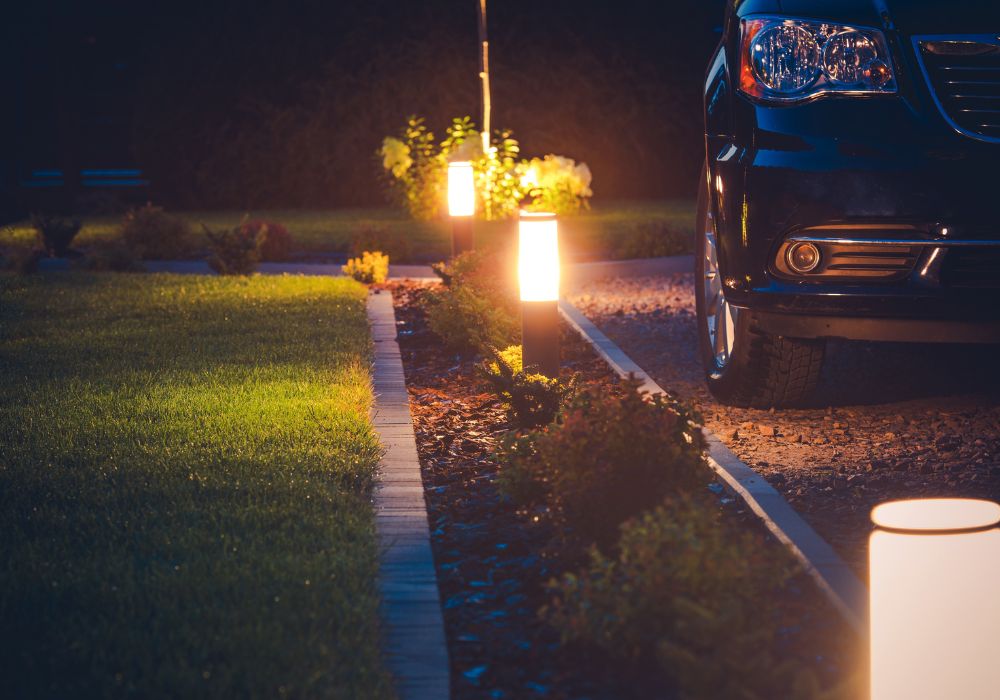
Safety and Regulatory Considerations
When installing driveway lighting, it’s important to consider safety and compliance with local regulations. Lights should be positioned to avoid glare that could impair drivers or disturb neighbors. Choosing fixtures rated for outdoor use ensures durability against weather conditions. In some cases, professional installation may be advisable to meet electrical codes and optimize the lighting design.
Modern Driveway Trends
The evolution of driveway design reflects changing lifestyles, technological advancements, and a growing emphasis on sustainability. Modern driveways are no longer just functional spaces for parking vehicles; they have become integral components of a property’s aesthetic and environmental footprint.
Here are some of the latest trends shaping the way homeowners design and use their driveways.
Smart Driveways with Integrated Technology
Technology integration is transforming driveways into smart spaces that offer enhanced convenience and security. Features like heated driveway systems use radiant heating coils beneath the surface to melt snow and ice automatically, eliminating the need for manual snow removal and reducing the risk of accidents.
Smart lighting systems connected to motion sensors or home automation apps allow for customizable illumination, improving safety and energy efficiency. Additionally, some driveways now incorporate charging stations for electric vehicles, reflecting the growing shift toward sustainable transportation solutions.
Sustainable and Eco-Friendly Materials
Environmental consciousness is a significant driver in modern driveway designs. Homeowners are opting for materials that reduce environmental impact and promote sustainability. Permeable pavers made from porous materials allow water to seep through the surface, reducing runoff and promoting groundwater recharge.
Recycled materials like reclaimed brick, rubber from old tires, and crushed glass are being used to create unique and eco-friendly driveway surfaces. Grass pavers, which combine concrete grids with grass growth, offer a green alternative that blends hardscaping with natural vegetation.
Minimalist and Sleek Designs
Simplicity and clean lines are hallmarks of modern driveway aesthetics. Minimalist designs focus on uncluttered spaces, neutral color palettes, and the use of materials like smooth concrete or large-format pavers. This approach creates a sleek and sophisticated look that complements contemporary architectural styles. The emphasis is on functionality without unnecessary ornamentation, resulting in driveways that are both practical and visually appealing. Subtle details like linear drainage grates and understated edging contribute to the overall minimalist effect.
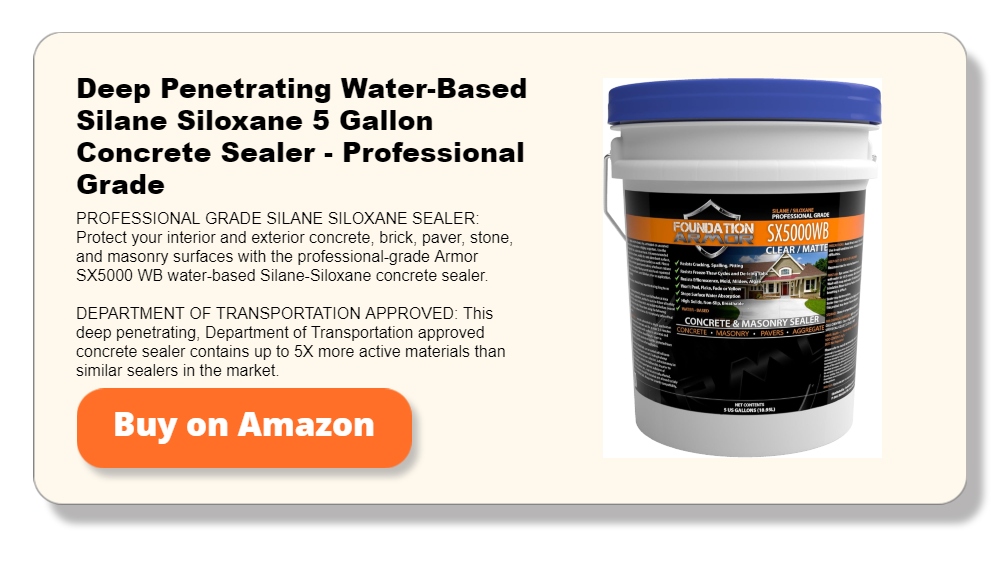
Artistic and Customizable Patterns
Personalization is a key trend, with homeowners seeking to make their driveways stand out through artistic designs and custom patterns. Stamped concrete can mimic the appearance of more expensive materials like stone or brick, offering a cost-effective way to achieve a high-end look.
Intricate mosaic patterns using colored pavers or tiles add a unique artistic touch. Scoring and staining techniques allow for the creation of bespoke designs directly on concrete surfaces. These customizations enable homeowners to express their individuality and enhance curb appeal.
Integration with Landscaping and Outdoor Spaces
Modern driveways are increasingly designed to harmonize with the surrounding landscape and outdoor living areas. This trend involves using complementary materials and integrating features like planters, lighting, and seating areas.
Incorporating greenery through borders, islands, or permeable surfaces softens the hardscape and promotes a seamless transition between the driveway and garden spaces. Water features or decorative sculptures can serve as focal points, enhancing the modern driveway’s aesthetic appeal and creating a more inviting entrance to the home.
Use of High-Quality and Durable Materials
Durability is a priority for homeowners looking to invest in long-lasting modern driveway solutions. High-quality materials like natural stone, premium concrete mixes, and advanced composites offer enhanced strength and resistance to wear.
These materials not only extend the lifespan of the driveway but also require less maintenance over time. Sealants and protective coatings improve resistance to stains, weathering, and fading, ensuring the driveway maintains its appearance for years to come. Investing in durable materials can also increase property value by reducing future repair costs.
Multi-Functional Driveway Spaces
As urban spaces become more limited, driveways are being designed to serve multiple purposes. A modern driveway can double as a recreational area, such as a basketball court or a play space for children. Using decorative paving and movable elements like planters or furniture allows the space to be easily adapted for different uses. This multifunctional approach maximizes the utility of the modern driveway, making it a versatile extension of the home’s living space. Designing with flexibility in mind ensures the area remains functional and relevant as the family’s needs evolve.
Emphasis on Lighting and Ambiance
Lighting plays a crucial role in modern driveway design, enhancing safety and highlighting architectural features. Innovative lighting solutions include LED strip lights embedded along the edges, illuminated pavers, and bollard lights that provide both function and style.
Accent lighting can highlight landscaping elements or create patterns on the modern driveway surface. Smart lighting systems allow homeowners to control brightness and color schemes, adapting the ambiance for different occasions. Effective lighting design not only improves visibility but also contributes to the property’s overall aesthetic appeal.
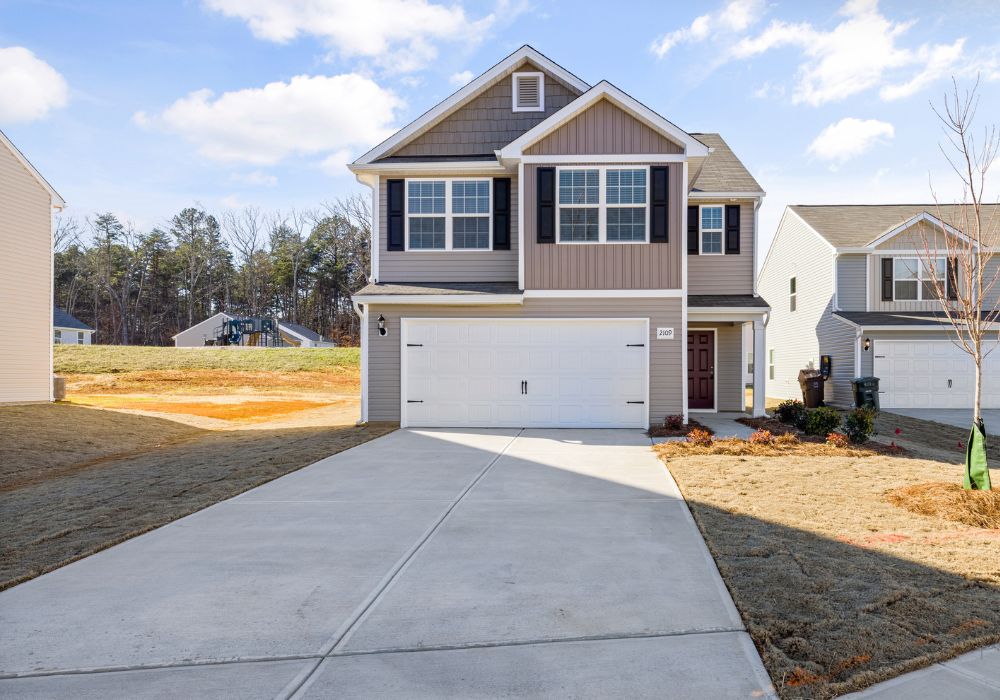
Incorporation of Geometric Shapes and Textures
Geometric designs and varied textures add visual interest to modern driveways, aligning with contemporary architectural trends. Patterns like herringbone, chevron, and hexagonal layouts create dynamic surfaces that catch the eye.
Mixing materials with different textures, such as smooth concrete with rough stone inserts, adds depth and contrast. These design choices can highlight specific areas of the modern driveway or create the illusion of more space. Geometric and textural elements offer a modern twist on traditional paving methods, resulting in a distinctive and stylish appearance.
Conclusion
Modern driveways have evolved into essential elements that enhance properties’ functionality and aesthetic appeal. They incorporate innovative designs, sustainable materials, and technological advancements to meet contemporary needs. Investing in a modern driveway not only improves curb appeal but also adds value to a home. As trends continue to develop, homeowners have exciting opportunities to personalize their driveways to reflect their style and priorities.






